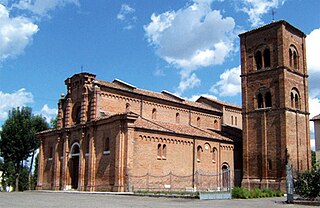History
Origin and development

The district was born in the 1960s, thanks to the initiative of Mario Veronesi, a pharmacist who realised the potential of the market for disposable products for medical use. In his small assembly workshop (Miraset, with only three employees), he studied and developed a new prototype of an artificial kidney, one of the most sophisticated of the few that were being produced.[ citation needed ]
From this initial nucleus, technicians and investors (including Veronesi himself) broke away several times to set up their own business projects and found other companies.[ citation needed ]
Since 2000, the favourable economic performance of these companies has attracted the interest of foreign investors and large multinationals attracted by the technological capabilities of the area, resulting in numerous changes of ownership and industrial concentration and contributing to local development.[ citation needed ]
The result is an entrepreneurial fabric characterised by a strong projection towards foreign markets and, at the same time, by a tendency to concentrate strategic and innovative activities, accompanied by the widespread diffusion of service and manufacturing activities, which are decentralised outside and entrusted to small local companies.
2012 earthquake

In May 2012, a series of earthquakes devastated, along with other towns in Emilia, the northern area of the province of Modena, especially Mirandola and the neighbouring municipalities. The biomedical district suffered very serious damage from 20 May onwards, aggravated by the devastating tremor of magnitude 5.8 on 29 May, whose epicentre was just 2 km from the industrial area of San Giacomo Roncole and caused the death of four people crushed by the rubble of the Aries and BBG companies. [5] [6]
In spite of the very serious disruption, the companies in the district tried to start up again immediately so as not to interrupt production. The fact that many large companies belonged to international industrial groups and that many warehouses were covered by insurance against natural events (including earthquakes) meant that the financial resources needed to rebuild and restart were found more quickly than the aid promised by the state. According to a 2015 survey, only 16.4% of companies had received state compensation three years after the earthquake. [7]
As early as 2014, lay-offs were no longer being used, while between 2015 and 2016 90% of the district's biomedical companies were back at full capacity, [8] with even an increase in production compared to the pre-earthquake situation. [9]
Thanks to reconstruction funds, on 10 January 2015 the Technology Park for Medicine (TPM) was inaugurated inside the new Mirandola school complex. This is a scientific-technological park [10] for research into toxicology, proteomics, applied microscopy, cell and material biology, sensors and systems. [11]

















